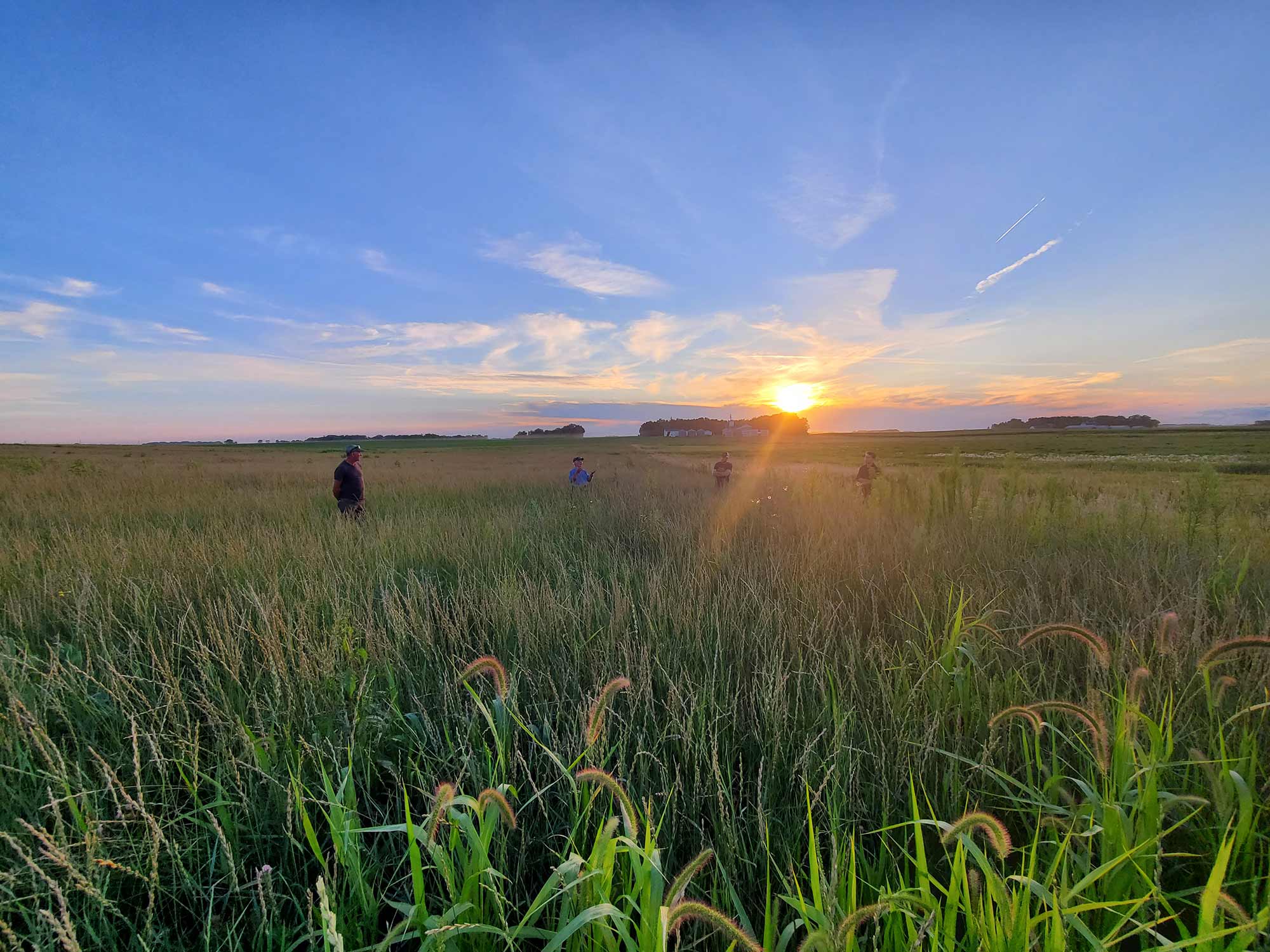Stories & Videos
No-tillers take the lead for water quality

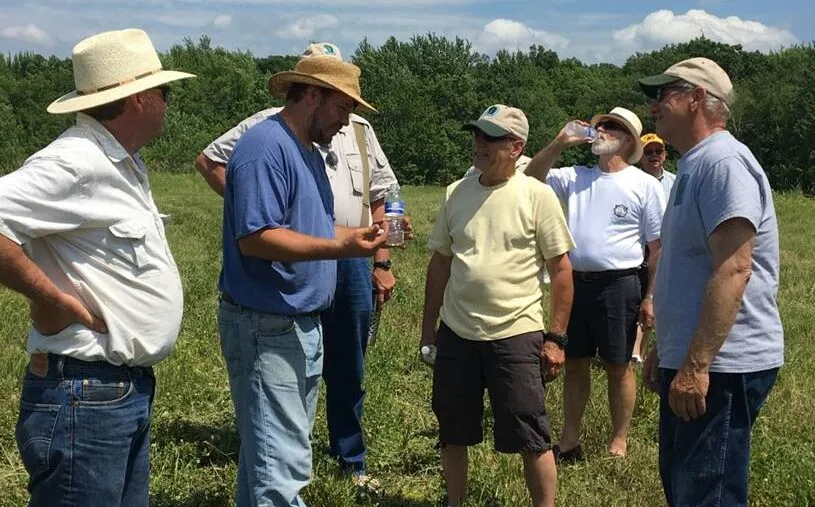
Wisconsin no-tillers John Eron and Matt Hintz didn’t wait for regulations telling them how to farm.
They started farmer-led watershed groups to deal directly with local environmental issues and the groups that raised them, not as adversaries, but as advocates. They opened their farm gates to other farmers and non-farmers for field days, sought state grants to run trials of farm-based solutions to the problems and promoted the results.
While their efforts are paying off in their communities and on their farms in ways they never expected, Rebecca Power, director of NCRWN (North Central Region Water Network, a 12-state collaboration of University Extension educators) says more is needed to support and promote these farmer-led efforts.
“Many of our 12 states have active farmer-led groups focused around watersheds and water quality concerns,” says Power. “We look at how farmers are leading, how they come at it from a farming perspective and what support they need.”
Based on interviews and experience, NCRWN developed a three-module training and peer conversation starter for farmers to use when considering starting a local watershed group.
It identified different types of leadership that can help a farmer-led group be successful, including engaging in peer-to-peer sharing of information about farming practices; serving as consultants on advisory boards and committees; decision making on watershed projects, goals and strategies; and leading by example.
Successful startups
Eron, a no-tiller from the central Wisconsin town of Stevens Point, says these are all important. A co-founder of a local watershed group, Farmers of Mill Creek, he juggles an 800-acre farming operation, custom forage harvesting, a rustic barn/event center and helping his dad in his implement business, while raising two children with his wife, Melissa.
Eron first got involved in 2012 with Friends of Mill Creek, a local environmental group concerned about water quality degradation in the Mill Creek watershed and critical of farming. He recalls calling out speakers and other members for their one-sided views, which led to inviting the group’s board to visit his farm to see the other side.
He then began inviting like-minded farmers for a meal in his shop, with Friends of Mill Creek joining them afterwards to sit and talk. Talk evolved into the formation of Farmers of Mill Creek in early 2016.
Portage County ag agent Ken Schroeder advised on establishing the group. He also helped them apply for $20,000 from the Wisconsin Department of Agriculture, Trade and Consumer Protection (DATCP) Producer-Led Watershed Protection Grant Program. The funds were used to set up no-till and cover crop test plots on local fields and host field days and meetings.
At Eron’s suggestion, the farmer board took on controversial water sampling that the Friends of Mill Creek had been doing. When the environmental group had been conducting the sampling, the farmers had felt threatened and defensive. Having fellow farmers do it changed things.
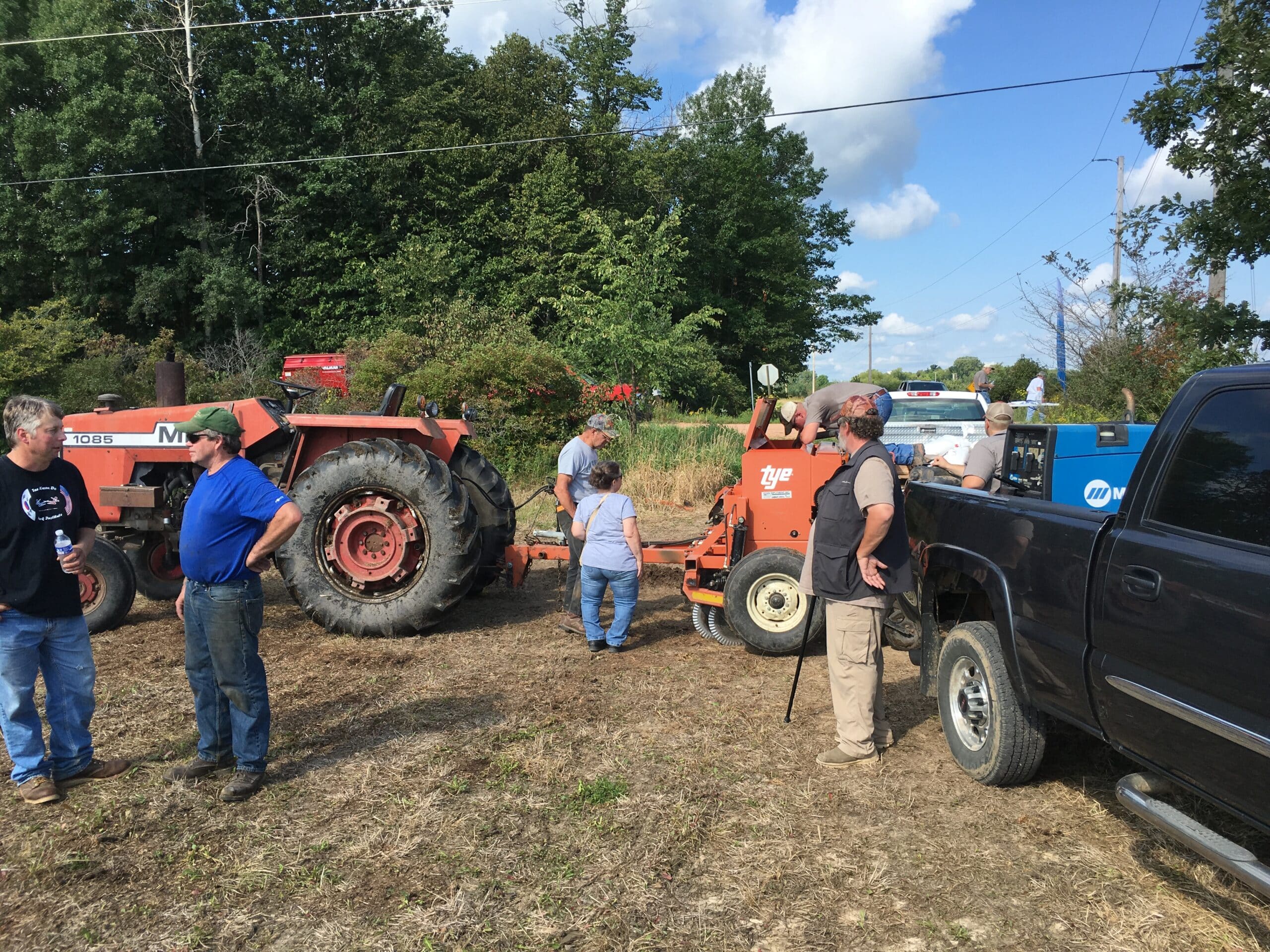
“Soon we had farmers requesting water quality testing, and we were presenting information on water quality issues to the DNR and other groups, instead of an opposition group presenting it,” says Eron. “We moved to the solutions side of the equation, promoting no-till and cover crops to other farmers.”
Phosphorus reduction
Still active in the Friends group, Eron suggested it concentrate on promoting pollinator habitat, an effort the farmer’ s group supports with funding from the grant program and farm plots. Meanwhile, Farmers of Mill Creek was working with the DNR and Wisconsin Land and Water on watershed issues. So when the Environmental Protection Agency (EPA) approved site-specific phosphorus (P) criteria for several lakes in the Wisconsin River Basin in July of 2020, it came as no surprise to Eron and the Farmers of Mill Creek. And they were already changing practices to meet the new limits.
Four years earlier, when the group finished its first year, Eron presented what they were doing at the Wisconsin River Symposium, an annual meeting of watershed stakeholders. Rick Georgeson, a leader of the Petenwell and Castle Rock Stewards (PACRS), lakeshore owners downstream on the Wisconsin from Mill Creek, was also presenting. PACRS was concerned about P runoff from farmland contributing to algae blooms on their lakes.
PACRS had been instrumental in getting political support for research to establish Total Maximum Daily Load (TMDL) limits for P entering public waters in Wisconsin. The legislature dedicated nearly a million dollars for the DNR to monitor major tributaries for nutrients entering lakes and develop allowable TMDLs for them. It was a subject that had farmers on edge, fearing new regulations.
“In prior years we had seen few farmers at the meeting, so that year we worked with the Wisconsin Farm Bureau and others to increase farmer representation,” recalls Georgeson. “John came up and said, ‘You bring lake people to my farm, and I’ll bring farmers to your lakes.’”
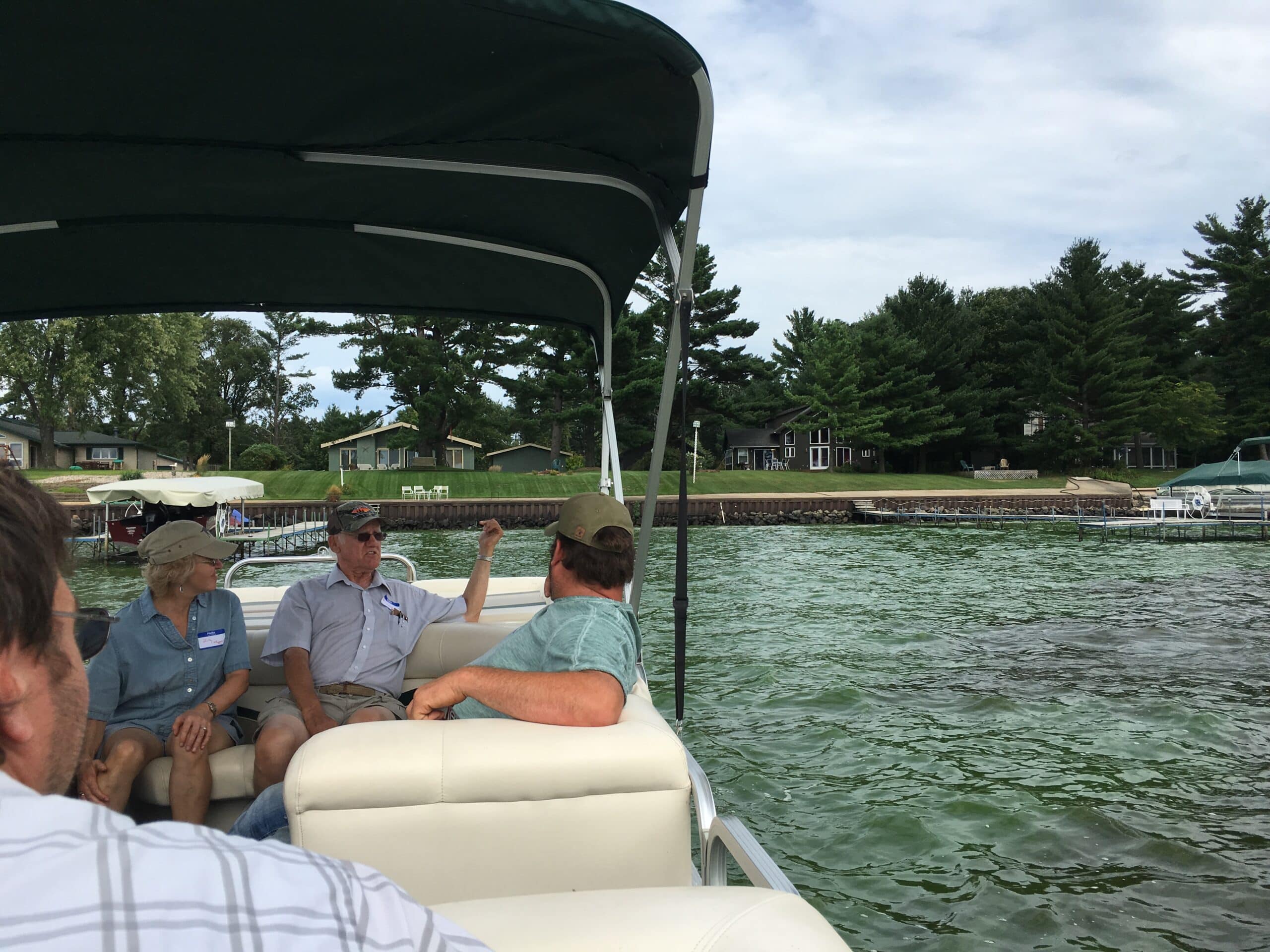
Once again, conversation led to cooperation. Soon Eron and other farmers were learning about the algae problems firsthand through boat rides on the lakes, and PACRS members were touring farm fields. Farmers of Mill Creek had been formed with a goal of showing the public the positive environmental work being carried out by area farmers, and it was happening. PACRS responded by contributing money to help pay for a no-till drill and later a roller/crimper to be rented out to farmers for trials.
Influence and inspiration
Farmers of Mill Creek has become a powerful voice for changing the way they and others farm and the way farmers are viewed by their local communities. Along the way they’ve gathered strong allies and served as a template for other farmer leaders like Matt Hintz, a Portage County no-tiller in nearby Amherst.
Hintz had been facing off with non-farming neighbors concerned about application of municipal biosolids on his fields and potential leaching of nitrogen (N) into groundwater. With Schroeder’s help, he and a handful of others decided to follow the lead of Farmers of Mill Creek. They formed Farmers for Tomorrow, a watershed based group, to encourage local farmers to use cover crops and no-till practices through on-farm trials and field days.
Now in their fourth year, a core group of 6-8 farmers plan meetings attended by 40-45 area farmers. At a March meeting, goals are set and information is presented on cost share available for no-till and multi-species cover crop demonstrations. Two in-field events are held during the growing season, with another informa- tional meeting during the year. Like the other groups, they have received DATCP grants to help cover costs.
Many of the practices demonstrated at field days were standard for Hintz. A first generation farmer, he adopted no-till practices as a cost-saving measure when he started farming 22 years earlier. He began using cover crops about 10 years ago. His 1,500 acres include alfalfa and mixed hay, field corn, soybeans, wheat, rye, peas and sweet corn as contracts are available.
While friction remains with the initial critics, Hintz says the group is making headway. “Area on-farm practices are changing, and landlords, especially female landlords, like the impact of cover crops,” he notes. “They see what we’re doing and call us about renting their land.” He admits he envies Eron the off-farm support his group gets, while appreciating all the help Schroeder has provided. “We’re sort of off on our own here,” he says. “I touch base with John a couple of times a year, and we often share the same speakers, which reduces costs. Farmers of Mill Creek has been very supportive of what we’re doing.”
Farmers working with farmers
While both watershed leaders appreciate the support they’ve received from government programs, they emphasize it is farmers working with farmers that makes their efforts successful. The groups lay out plans for the growing season and take responsibility for implementing them.
“The reason we’ve had success is our farmers aren’ t interested in working with traditional government programs,” says Eron. “Our members look at things and say, ‘This could be a good program to follow, but here are the issues.’”
Schroeder endorses the importance of farmer-led efforts. “I can talk all I want about cover crops and no-till, but when it’ s farmers showing their neighbors what they’ ve learned and what’ s working, that is way more valuable,” he says.
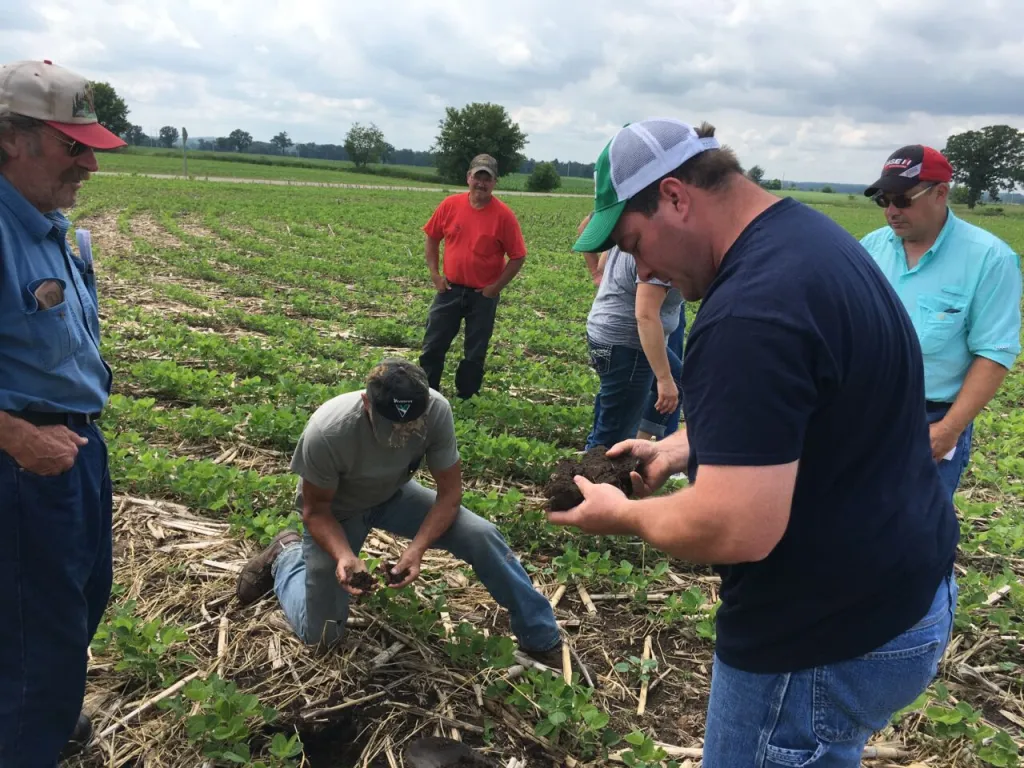
The work of both Farmers and Friends of Mill Creek continues to evolve. In addition to farmer oriented field days, the groups have added a major educa- tion component. Hundreds of students from preschool through college have visited member farms and learned about soil health and pollinator habitat.
Georgeson is proud of the work done with Eron and the Farmers of Mill Creek.“When we started working on the TMDL project, we were told by our critics, ‘Wait until you talk to farmers — they’ll slam the door on you,’” recalls Georgeson. “Instead, we worked together, and in August 2020 the DNR reported a substantial decrease in phosphorus.”
IT STARTS WITH THE LAND
When the U.S. Fish & Wildlife Service announced the National Fish Habitat Partnership more than 20 years ago, 19 regional groups formed around the country to focus on water and fish habitat. One took a different path. In the Upper Mississippi basin, the Fishers & Farmers Partnership focused on the land.
“The river scientists and fish biologists involved recognized that what happens in the water is due to what has happened on the land,” says Nancy North, program lead for the Watershed Leaders Network (WLN), an initiative of Fishers & Farmers Partnership established to connect farmers, landowners and local collaborators to share ideas, challenges and successes. “They recognized that they couldn’t do this work without partnering with people in agriculture across the basin. They put together a steering committee that included the Iowa Soybean Association and the Minnesota Corn Growers and other agricultural organizations.”
Fishers & Farmers was committed to funding projects that were led and driven by farmers. With the active assistance and support of various state and federal agencies and conservation groups, watershed projects in several states got underway in 2012.
In Iowa and elsewhere, projects included on-farm demonstrations of strip-tilling, cover cropping and managed grazing plans. By 2016, farmers in Missouri were demonstrating alternative watering systems that excluded livestock from streams, reinforced stream crossings and created riparian corridor habitat. In Minnesota, farmers were installing water storage systems and bioreactors to reduce ravine erosion, sedimentation and nutrient movement to streams. Soon Illinois farmers were working on streambank stabilization and riparian buffers. Eron and others in Wisconsin developed similar conservation related demonstration projects across the state.
North was involved with Fishers & Farmers Partnership from near the beginning and recognized the need for a strategy to involve farmers. Funding from the McKnight Foundation resulted in the creation of multi-day workshops starting in 2016. Other efforts to spread the word include Boots on the Ground with Fishers & Farmers, and Fishers & Farmers Neighbor to Neighbor. Boots on the Ground presents live online conversations with local watershed groups discussing their work, which can be watched later on demand. Neighbor to Neighbor is a monthly live radio broadcast interview by Pam Jahnke and the Midwest Farm Radio Network (MFRN) with farmer-led groups, also available as a downloadable podcast.
“Interest in the efforts of these farmer led groups and the work of Fishers & Farmers has spread far beyond our five states,” says North. “Neighbor to Neighbor is the MFRN’s most downloaded podcast. There is a hunger for this information.
— Story by Jim Ruen, published by No-Till Farmer Magazine.
Fishers & Farmers Partnership for the Upper Mississippi River Basin supports collaborative, local, farmer-driven work for healthy streams, farms and fish habitat. For more than a decade we have provided funds to projects in Iowa, Illinois, Minnesota, Missouri and Wisconsin, as well as connection and leadership development for local teams, including people featured in this story. Learn about Fishers & Farmers Partnership funding and apply here.
